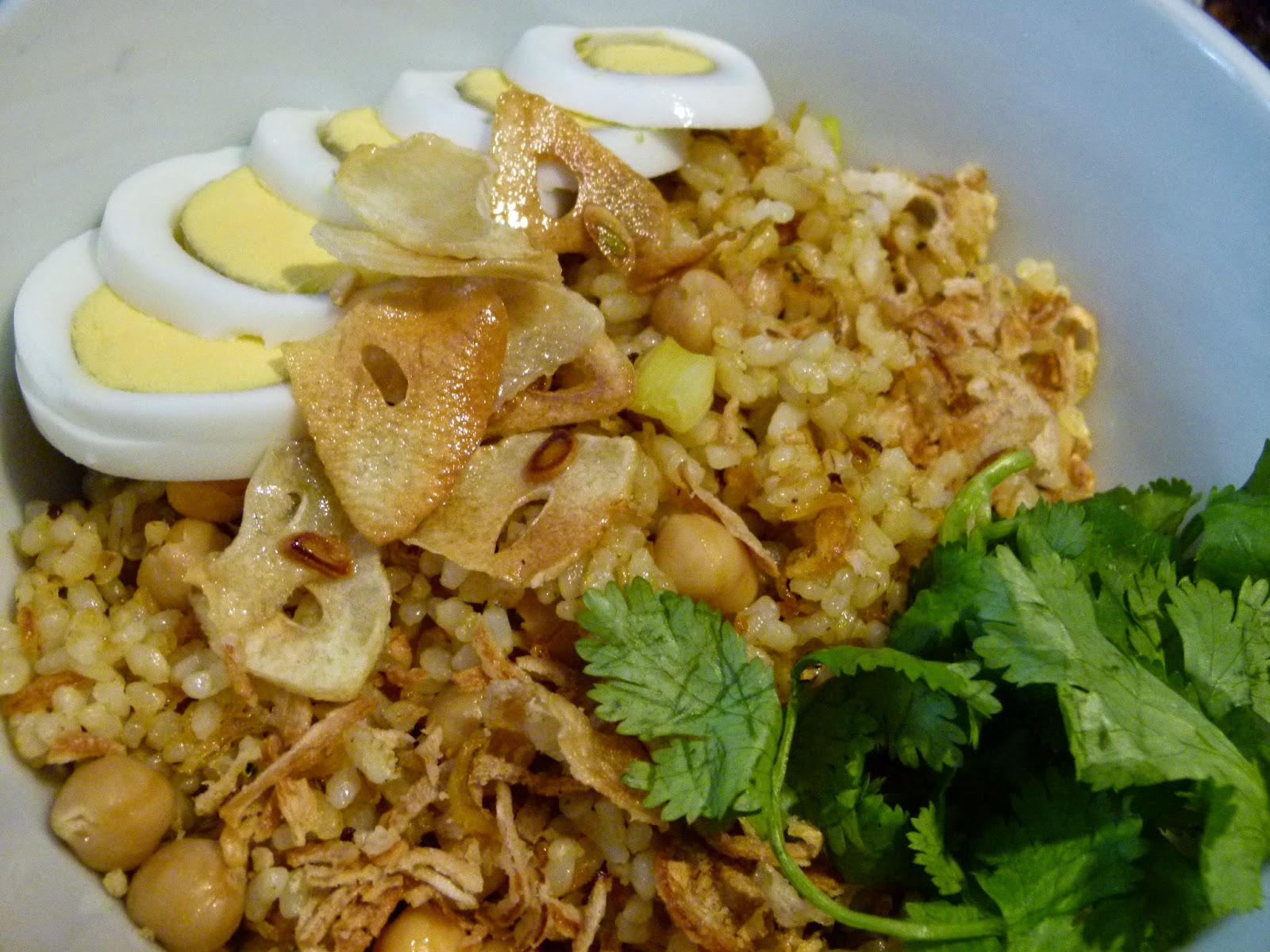My version here is slightly more involved with a few more ingredients, but nevertheless, requires a similar feel for the ingredients that go together in the wok.
Ingredients:
- About 1 cup cold cooked rice (preferably leftovers)
- About 1 cup cooked garbanzos (chickpeas):
- About half-cup dried "baby" anchovies. These look like :
And come in a package like this:- About 3-4 Tablespoons of crisp-fried garlic chips (garnish)
- About 2 hardboiled ggs (garnish) sliced
- About 2-3T cilantro (optional, for garnish)
- 1T Peanut oil (or the oil that the garlic was fried in)+1 to 2 T Sesame oil mixed
- About half a cup (or more of deep fried shallot slices. These look like::
 And come prepackaged as:
And come prepackaged as:General Method*:
- Break up the rice into as small pieces as you can, by hand. Cold rice forms clumps and the fewer clumps you have to break up later, your fried rice will look and taste better.
- Heat the oil in a wok (or frying pan which is large enough to easily contain everything). Medium-low to medium heat works well here.
- When the oil has reached a temperature that is approximately 300F, stir fry the anchovies in it - make sure you don;t burn them, but they should crisp up nicely.
- Add the rice and stir fry to make sure that each grain of rice is coated with some of the oil.
- Add the garbanzos and stir fry until everything is warmed through (or heated to your taste). Add enough salt and optionally pepper - to your taste.
- Serve the rice in bowls, garnished with sliced eggs, deep fried shallots/garlic, and (opotional) cilantro leaves.





No comments:
Post a Comment